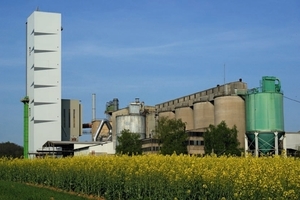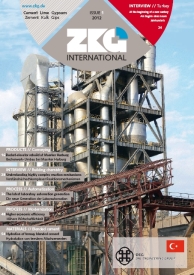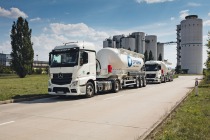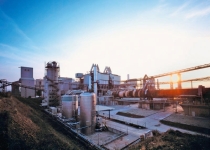Drastic reduction of CO2 emissions
The Lafarge cement plant in Wössingen (Fig.), near Karlsruhe, has requested an environmental sustainability audit (ESA) from the district president in Karlsruhe within the framework of their sustainability strategy. A so-called “scoping” meeting was held with representatives from recognised environmental organisations and the respective agencies to coordinate the conditions and scope of the ESA. After successfully passing the ESA, Lafarge will apply for a permit to use 100 % refuse-derived fuel (RDF) at the Wössingen cement plant, thereby taking a further important step in reducing carbon emissions and conserving natural resources. Currently, the kiln line in Wössingen has a permit to use refuse-derived fuel in a ratio of 60 % RFD to 40 % fossil fuels. The EBS 100 project will reduce annual carbon emissions by around 95 000 t and the use of finite fossil fuels by about 58 000 t. The decision to make the increase from 60 % to 100 % required intensive preparation. In the years 2008/09, Lafarge invested 60 million € to modernise the Wössingen Plant, implementing the most modern filtering and metering equipment into the production process. Over the past three years, Lafarge engineers have continued to perform on-going checks in close collaboration with agencies and external experts. Practical experience confirmed the recent findings in science: Thermally recycling refuse-derived fuels, such as old chopped tyres and Fluff (a processed mix of predefined residual materials from industrial processes or commercial collections), makes it possible to significantly reduce emissions like carbon dioxide (CO2) and nitrogen oxide (NOx). Other emissions will also remain significantly below threshold values, which have been repeatedly tightened over the past years. The ESA and the subsequent permit processes will presumably take one year to complete. Lafarge’s Wössingen Plant will continue to provide current, transparent information on the progress of the procedure.
www.lafarge.de/EBS100
www.lafarge.de




